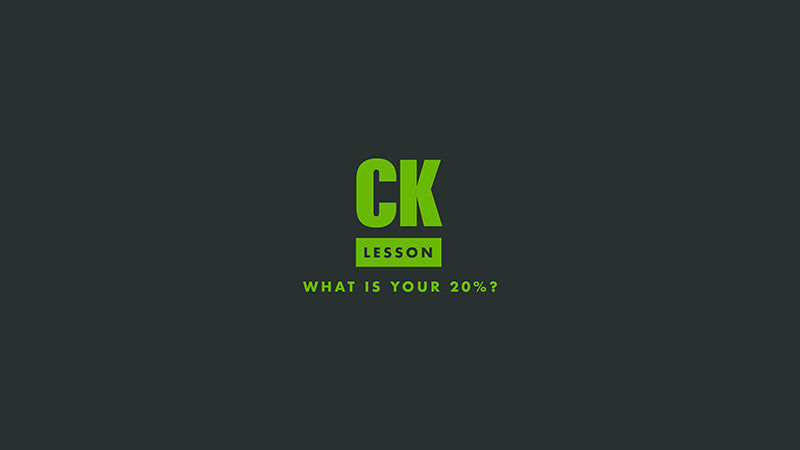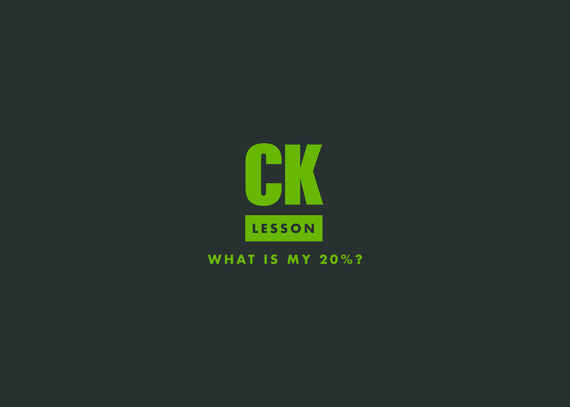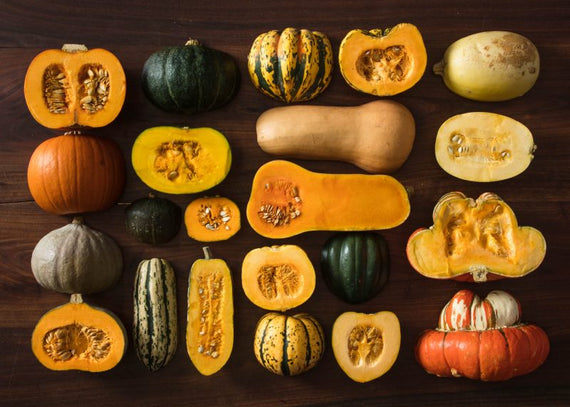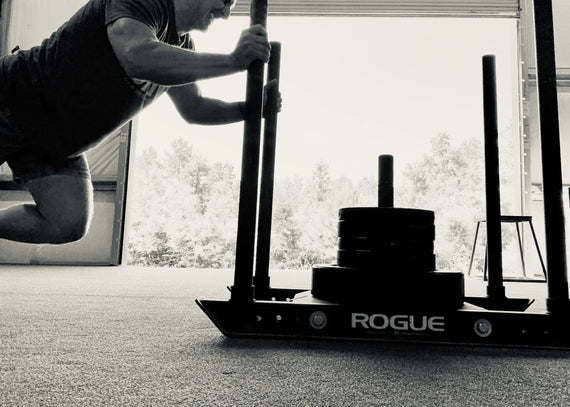In CK we practice the "80/20 Rule" and apply it as 80% of the time you hit your habits in line with your goal, and 20% you have some wiggle room. But many people want to put a finite number to this equation. In the following lesson from Week 12 of Clean Kitchen 12 Week Challenge I will hopefully help shed some light on what that pesky "20%" wiggle room actually means to YOU.
And then tomorrow you will get part 2 of the lesson, what is MY 20%?
Don't feel like reading? Lucky you we have every single lesson in the CK Challenge audio recorded!
Today Coach Jamie reads your lesson.
Our hope is that by the end of this program you will have a handle on what it means to live with normal, healthy eating habits. Not always thinking about a diet, or what is wrong with your body, but just living and thriving in that 80/20 Life.
In Clean Kitchen, it’s our way of life—80% of the time hit your habits and make good decisions, and 20% of the time you have wiggle room. It’s a perfect system for the imperfect bunch we are.
It allows us to get over and move past the times we slip up. The “20%” is just a speed bump in the road, nothing more. Move past it and keep adding in the good 80% of the time. And over time, you build up more good actions than not-so-good-actions, which results into what your health becomes. We become what we habitually do.
But what does the 80/20 split really look like?
I had a really great question asked to me one day by a client:
“How do you measure your “20%”? If you do not track macros, how do you know when you have gone too far?”
In the CK Challenge we use a couple of tools to help conceptually understand the 80/20 split for yourself.
We have our Habit Tracking system in the CK App, which we hope you have taken full advantage of. You have to physically check off little boxes if you did your habits for the day, and this gives you a habit score. As the weeks build, you build a more accurate score. The goal is to have each of your habits 80% (or higher) completed.
We also use what is called a weekly Meal Compliance Chart, where you count how many complaint meals you had for the week, then divide by your total meals. This will give you a percentage score of just how well you did in your weekly meals. And depending on what you deem “compliant” for your particular goal, your compliant meals will probably look different than another person. Different people, different goals, different looking plates.
When we talk about the “80%,” most of the time we are referring to “good habits in line with what you want.” When we refer to “the 20%,” we are usually talking about choices that are not in line with your goals. Habits happen often and repeatedly. Choices happen occasionally, and do not become a habit.
This got me thinking that we all have our own version of “The 20%” and how it effects our bodies. Because we all have different goals, everyone’s 20% will look different. The more I think about it, the more I realize it's an individual thing…like a feeling, not an exact macro-calorie-count. Even more reason not to compare your food to others. If it’s working, don’t worry about it.
So the real questions are, what are you after?
What is your goal?
What are your expectations?
THAT will determine your what your 20% looks like and how you go about determining it.
What I deem as my personal “20%” is going to look a lot different from someone else’s. I have had many years of practicing my habits. So my “treats” or cheats may not look too bad to someone else. But my normal is different than yours. Steve always jokes that I run on jet fuel and rarely put diesel in the tank. So when I do deviate from my normal habits, I feel it. And that feeling dictates a lot of my decisions.
Even though I rarely track my macros (I loathe it), I have tracked enough in the past to understand what portions look like and the round-about-number I am getting. I am pretty aware of when I should probably put down the peanut butter spoon.
I also know the difference in a treat and full on cheat meal AND how my body will react to it. So I make choices based off of how my body reacted and felt in past experiences. The question that usually helps decide my choice is, how do I want to feel after?
For example, I know if I eat a whole pizza by myself (which I do) that one meal will bloat me for about 4 days. For the better part of a week I will feel like a busted can of biscuits while I eat really clean meals to get back to my baseline.
Even more important is that I am honest with myself about treats and blow out meals. I don’t justify the portions or food types, or try to tell myself little white lies. I just eat it and accept what I am doing, knowing full well what I will have to do in the days after to feel like my normal self again.
This is just self-awareness in action.
How do you determine your 20%?
You first need to train your “awareness.” When you are first starting out, like in the CK Challenge, using a tracking system like the CK Habit Tracker or Meal Compliance Chart is the perfect awareness tool without having to do a lot of math. It’s simple enough and gets you thinking, planning, and acting in the right direction. And in most cases, these tools are all you will ever need.
But if you really want a finite-number-equation—you will have to track your macros and calories. This means weighing out your food AND calculating the macronutrients every time you eat. Notice I did not say tracking macros was necessary to losing weight. It is only if you want to be super strict with your intake. You know by now you can make great progress without it.
This doesn’t mean tracking calories or macros is not useful. It actually is, BUT…there is always a “but…”
You should not rely on apps like My Fitness Pal to have the correct macros for every food, or worse, just randomly choosing a food from the MFP database that “sounds like” something you ate. Some foods are not verified and the entries are created by people just like you and me. The margin of error for macro-counting in general is quite high. Just know it can be up to 25% off in either direction, plus or minus. So there’s that to consider. Regardless, counting macros is another great awareness tool, BUT I highly suggest not obsessing over the numbers too strictly.
While most of you reading this are probably still working towards a goal or you want to continue to lose weight, the 80/20 Rule very much applies here. But honestly, the REAL 20% feeling is found in the Maintenance Phase.
The Maintenance Phase
The Maintenance phase means you are not actively trying to lose weight; you do not have the “restriction” mindset so you are not judging your body too harshly; and you are not obsessing over exact numbers. You are just living life, thriving with your habits, not gaining or losing any weight. This is ultimately where we all want to end up.
But what if you still want to lose weight, feel lean, and eat your 20%?
If you are in a weight loss phase, trying to figure out what the exact 20% is will probably make you feel really, really frustrated. This is because weight loss is a restriction-mindset, and you do have to focus more heavily on being more strict than lenient with your food intake. It’s just the nature of the beast. It’s the tradeoffs. Any deviation from your current intake is going to make you feel something…fluffy, bloated, water retention, whatever. And that’s just the physical. Mentally, that will do a number on you because you are in the “weight loss mindset.” And sorry ladies, but women’s weight fluctuate week to week because of our ever-changing hormones. It is what it is.
If in “restriction mode” for weight loss, could it be that instead of focusing on what your 80% should be and enjoying that, you are living for what your 20% could be? That is basically the definition of restriction—dreaming about what you “can’t have.”
The 20% is such a grey area. I want to be able to tell you you can have donuts and cake every week and still make progress, but honestly, I can’t. No one can promise any outcome. EVER. Some people may be able to eat donuts, while others won’t. Some people can eat over their “20%” and still see results while others have to stick to more of 90/10 split to see results—or the “results” they are expecting.
While I can’t tell you what your 20% looks like or how it will effect you, I can tell you that your 80% should look like one-hundred percent whole foods. There is no fudging there. So the bigger question might be this: are you trying to force foods into your 80% that should really be considered your 20%? Just some food for thought.
Tomorrow I will expand on this topic and I will share with you what my personal "20%" looks like.




